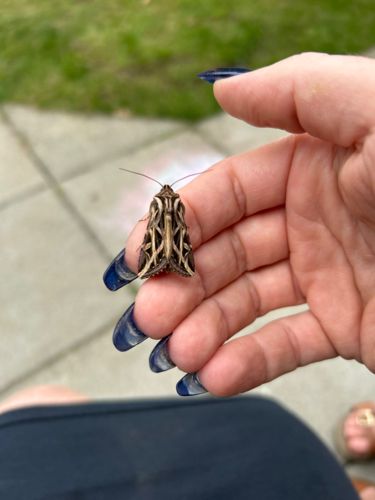Light Brown Apple Moth
Scientific Name: Epiphyas postvittana
Order & Family: Lepidoptera, Tortricidae
Size: Wingspan typically ranges from 18-25 mm (0.7-1.0 inch) for males and 20-30 mm (0.8-1.2 inch) for females. The body length is usually around 8-12 mm.

Natural Habitat
Found in temperate and subtropical regions, particularly in orchards, vineyards, nurseries, gardens, and other cultivated areas where host plants are abundant. They can adapt to a wide variety of climates and plant communities.
Diet & Feeding
Larvae are polyphagous, feeding on a wide range of host plants, including many agricultural crops (e.g., apple, citrus, grape, stone fruits, roses, corn) and ornamental plants. They feed on leaves, buds, flowers, and fruits, causing damage. Adult moths reportedly feed on nectar or other sugary liquids, but their primary role is reproduction.
Behavior Patterns
The Light Brown Apple Moth is typically active at dusk and during the night. Females lay eggs in clusters on the leaves and fruit of host plants. Larvae (caterpillars) construct shelters by webbing together leaves or rolling them, where they feed and develop. They can disperse by ballooning (wind dispersal of young larvae) or by moving short distances on plants. Adults are relatively short-lived.
Risks & Benefits
Risks: This moth is a significant agricultural and horticultural pest worldwide, especially in countries where it is an invasive species. Its polyphagous nature means it can damage a vast array of crops, leading to considerable economic losses through direct damage to produce, reduced yields, and increased control costs. It can also be a quarantine pest, restricting trade of agricultural products from infested areas. Benefits: In its native range, like any native species, it plays a role in the food web. However, due to its invasive pest status in many regions, its negative impacts far outweigh any potential benefits.
Identified on: 8/28/2025